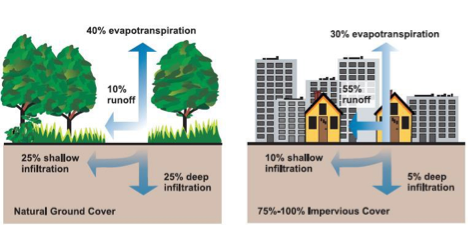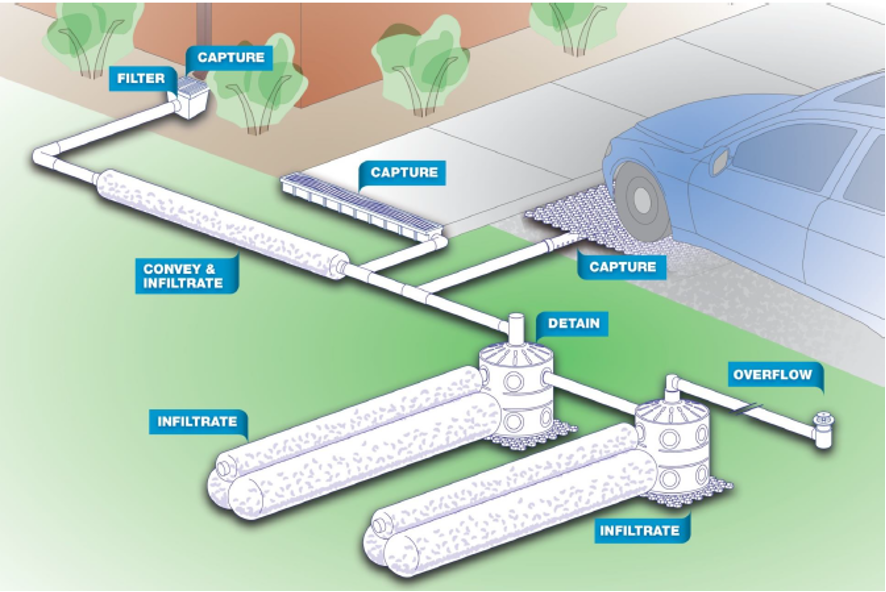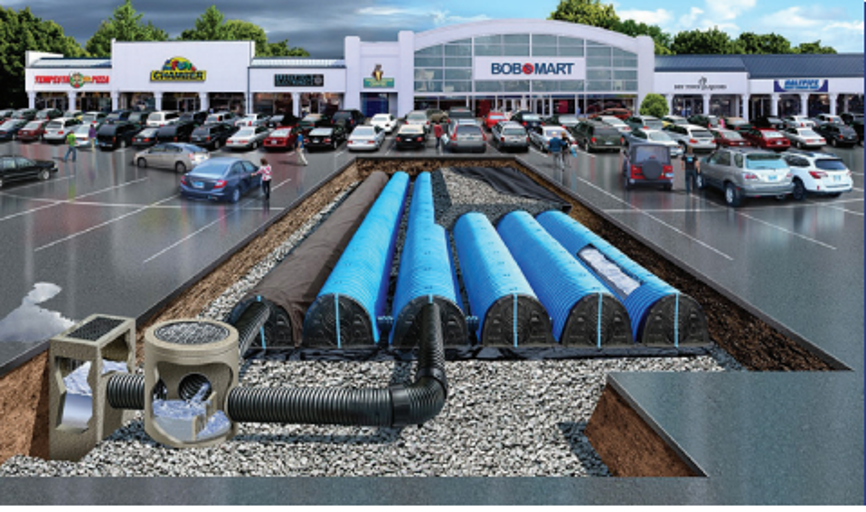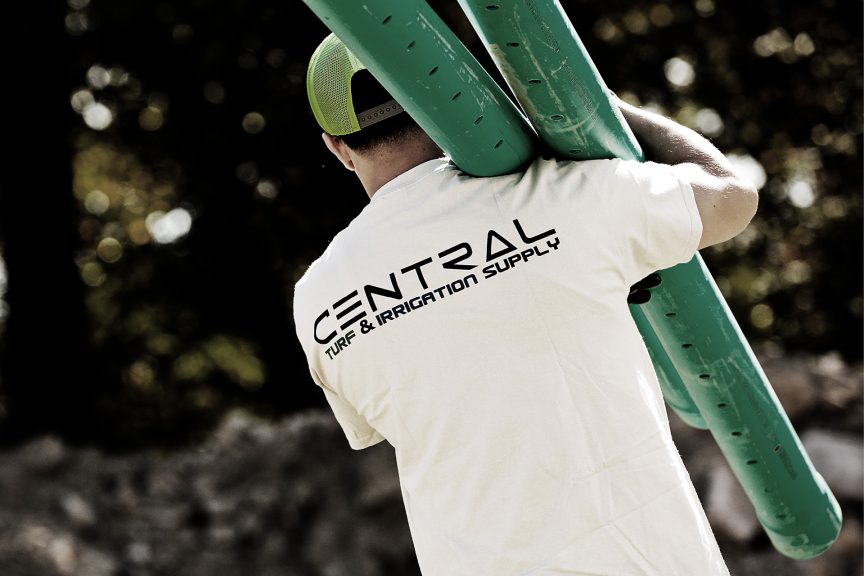As drainage regulations continue to tighten, we need to understand the reasons for why these are becoming more and more a part of everyday construction. Any new construction, whether that be as simple as an addition or a pool to an existing residential property, to new home construction, multi family housing, retail, or warehouses— any industrial project, is required to behave in a similar fashion (in relation to stormwater management) post-construction as it did pre-construction. This leads to the need for more and more elaborate systems to regulate stormwater as it pertains to any new construction due to the addition of impervious surfaces.
Regulations And The Reasoning Behind Them
When looking at the bigger picture of how stormwater is regulated, we have to go back to US Federal Clean Water Act of 1972. The goal of this act is to restore all the waters of the US to fishable and swimmable condition. This act was expanded in 1987 to regulate municipal and industrial stormwater discharges. The reasons for this become clear when we look at how stormwater behaves in an urban vs undeveloped area. They graphic below illustrates the differences:

With only 10% runoff vs 55% runoff in a highly developed setting, we are left with the question of where does all that water go?
Where The Water Goes
In many developed urban areas, the wastewater system and the stormwater system are combined. All water ends up at treatment plants that will discharge clean treated water back into rivers and streams. In dry and light precipitation conditions, this system behaves as it should and will return treated water out of the plant. In heavy precipitation, the system gets overwhelmed and is unable to keep up with the amount of stormwater entering the system. This results in polluted water being discharged due to the inability of the combined system to be able to handle the flow. See the graphic below for a better understanding on how this occurs.
Get Ahead Of The Curve
To provide a very high-level summary on the above, the more you can do to keep stormwater on the property, the more you do to protect the health and well-being of our waterways. If your township or municipality is not yet requiring stormwater management when installing new construction at this point, it is only a matter of time till they do. Understanding how a drainage system works will prepare you for when new regulations apply to you.
The goal of stormwater management is to become a good neighbor and the steps below will provide some guidance on how to best provide solutions to achieve that goal.
Stormwater System Anatomy
Regardless of the size of the stormwater system, the anatomy of the system remains the same:
- Capture the water at the source (filtration where applicable)
- Convey the water through some type of pipe
- Detain and Infiltrate
- Provide Overflow
Capture – Capture devices can range from direct plumbing from a downspout, catch basins or area drains, trench drains or even permeable pavers. A capture device is anything that allows stormwater to enter a system. This capture point can also have a filtration device to ensure the system remains clear of debris and prevent potential clogs in the future.
Convey – Once the water has entered the system, it has to be moved, or conveyed, using some type of pipe. This can vary from a flexible coil pipe, PVC, HDPE or even concrete depending on the size of the system.
Detention – Small scale residential projects can often be handled with a dry well system, seepage pit, or traditional French drain or manufactured trench drain. Large scale commercial systems will likely require a chamber type system (Underground Pond) to handle the volume required by ordinance, code or engineer requirements. These products vary widely in size, volume and cost and will be determined by the volume of water the system is required to handle. We are now seeing even small scale reidentail drainage systems requiring engineered designs. You are better to error on the side of caution when installing storage at a site and getting an engineer involved early can alleviate headaches down the road.
Overflow – Residential systems are often handles by a pop-up emitter. Depending on the volume of water exiting the system, multiple pop ups may be required to handle the amount of water exiting the system. Large scale commercial projects may require a large diameter pipe with an armored area beneath to prevent erosion from the water exiting the pipe.
Regardless of the size and scale of the system to be installed, the anatomy remains the same. The principles of a residential home system are the same that apply to a large warehouse. The amount of water that leaves the site should behave the same as preconstruction conditions notwithstanding system size.
A residential or light commercial layout may look something like the below:

An example of a large-scale detention system with inlets under a parking lot is below:

Finally,
No matter the size and scope of the system you are looking to install, Central has the products and expertise you need to complete your stormwater and drainage projects. From residential to commercial, our staff and relationship with manufacturers allows us to provide you the materials in a timely and cost-effective manner to get the job done!

